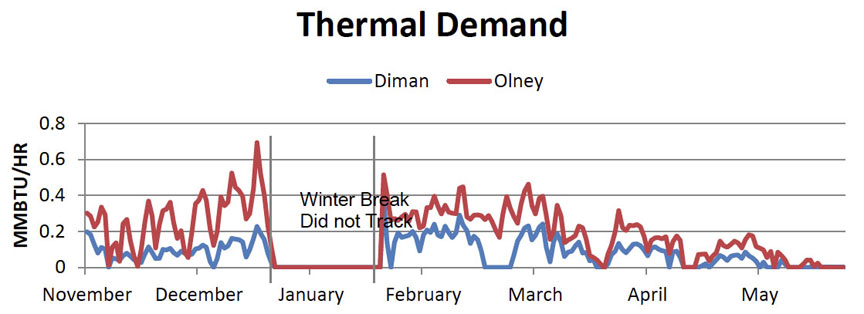
PROVIDENCE, R.I. [Brown University] — Brown University has reduced its greenhouse gas emissions by 29.4 percent over the last five years and slashed its energy costs by $3 million per year in the process, according to the University’s 2012 Sustainability Progress Report.
The reductions in emissions and costs come largely as a result of projects aimed at making campus buildings more energy efficient, the report shows. Since 2008, the University has invested $14 million in energy efficiency projects, including $6.5 million in the last fiscal year alone.
“Those investments are paying off,” said Christopher Powell, director of the Office of Sustainable Energy and Environmental Initiatives in Facilities Management. “We’re adding about a half a million dollars each year in new energy savings, which helps us pay for our energy investments and stay ahead of our emissions goals.”
In 2008 Brown officials committed to reducing emissions of energy-related greenhouse gases by 42 percent by 2020, using 2007 levels as a baseline. The University is now 10 percentage points ahead of the annual goal for this year, which called for a 19-percent reduction.

A switch from oil to cleaner-burning natural gas as fuel for the University’s central heat plant has played a key role in reducing emissions and costs, Powell said. Until last year, limited pipeline capacity kept the plant from using natural gas during the peak days of the heating season. But Facilities Management worked with National Grid, Rhode Island’s natural gas supplier, to expand the pipeline and enable the plant to use gas full time.
“That’s made a big difference,” Powell said.
Other energy projects in buildings across campus include updated heating systems, high-efficiency lighting, and weatherproofing improvements among others.
Each of those projects is generating financial returns as well as environmental benefits, Powell said. Lighting projects, for example, have cost around $2.6 million over the last three years. The annual energy savings attributable to those projects $569,000 per year, meaning the projects will pay for themselves in less than five years.
“It’s a good reminder that in the long run, sustainability can be cost effective,” Powell said.
Next up: greening the dorms and the students
A major focus moving forward is improving energy efficiency in the University’s dorms, which account for 25 percent of the total building space on campus. The Dorm Energy Efficiency Program began as a pilot project last year in Diman House, which was built in the 1950s.
“The goal was to combine physical improvements to the building with a behavioral component that encourages students to make energy-conscious decisions,” Powell said.
One of the improvements was the installation of radiator control devices that allow students to control the heat in their own rooms. “Before, the window was their thermostat,” Powell said. “If they got too warm, they opened the window.”
The new devices enable students to control their room temperature without sending precious heat out the window. The key, however, was making sure the students knew about the control devices and used them. That’s where the behavioral component of the project came in.
Brown EcoReps, a student group concerned with educating fellow students about environmental issues, and Facilities Management representatives held several events aimed at getting students on board. At one event, EcoReps demonstrated the new devices in a mock dorm room set up in the Diman lounge. Students were then asked sign a pledge stating that they would use their heat control and keep their windows closed.
“These events were all based on behavioral science,” said Kai Morell, outreach coordinator for Facilities Management. “We know that making pledges, practicing behaviors, and developing social norms are strong motivators for changing behavior. The EcoReps were really excited to take this on because it was such a great opportunity to see tangible results of their efforts.”
The results have been encouraging so far. Diman’s energy use last year was 58 percent lower than a similar dorm in the same complex. The project will now be expanded to other dorms, with an emphasis on the behavioral component.
“We think the behavioral component was responsible for probably half of our energy savings in Diman,” Powell said. “And I think it’s important that our students leave here with a sense that they participated in our sustainability efforts. They’re learning valuable lessons that will be part of their lives after Brown.”
